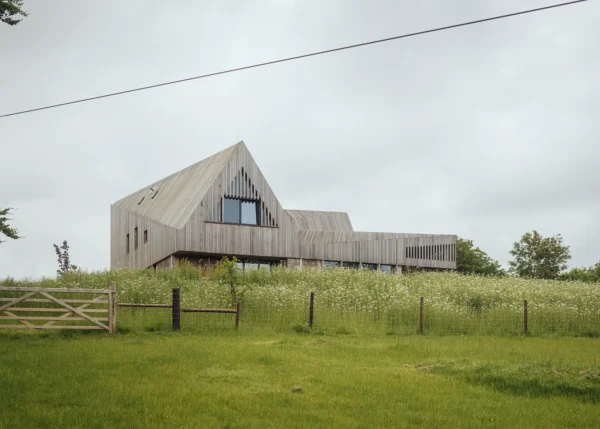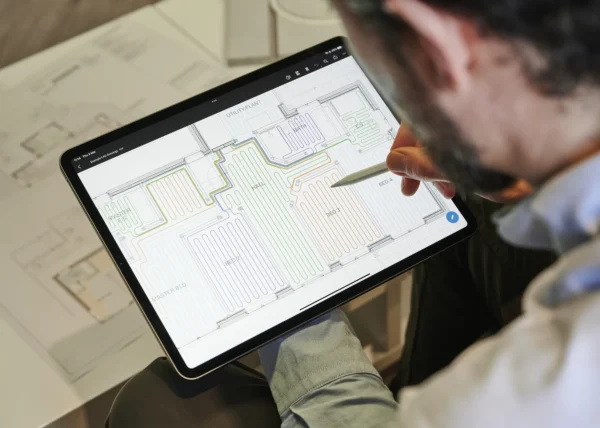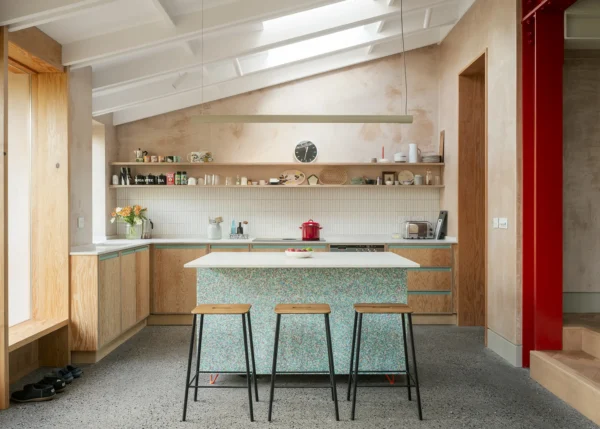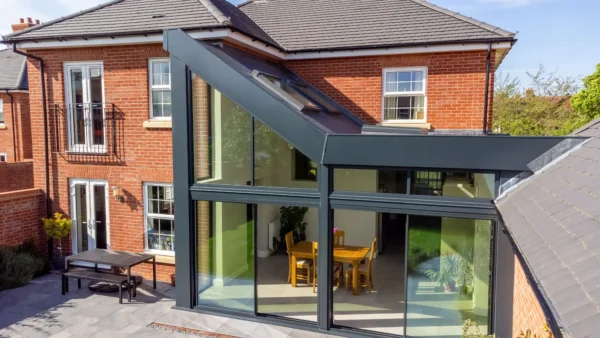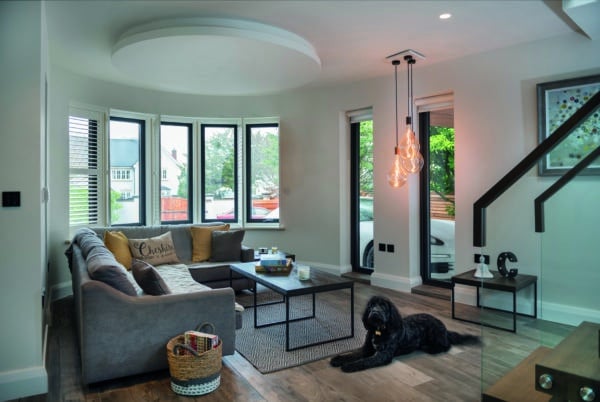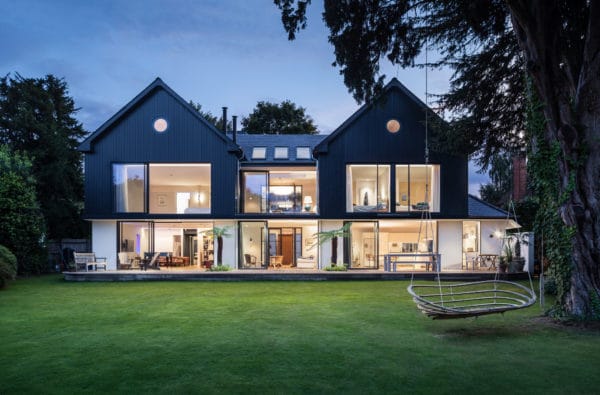Glass Types Explained: Triple Glazing, Low-e, Safety Glass & More
The type of glazing you choose when planning your build can contribute hugely to the overall performance of your home.
Thermal insulation, light and longevity are all significantly impacted by the glazing specification. So, it’s important to consider all the requirements of your project’s windows such as size and function, alongside your security and comfort.
With so many types of glass on the market, it’s always a good idea to consult with an expert who can talk you through the options, as they will understand and recommend what will work most effectively.
Safety Glass and Home Security
There are two types of safety glass: laminated or toughened.
For a newly built home, according to Approved Document Q in the Building Regs, any glass in an accessible aperture should be laminated. This is to reduce the likelihood of an opportunistic burglar accessing your home via the glazed elements. Therefore, all of Kloeber’s products use either toughened or laminated glass as standard.
Laminated glass holds together when broken – so it doesn’t shatter across your living spaces. In the event of breakage, the glass is held in place by a thin polymer interlayer between the sheets. This is either made of polyvinyl butyral (PVB), ethylene-vinyl acetate (EVA), lonoplast polymers, cast in place (CIP) liquid resin, or thermoplastic polyurethane (TPU).
The interlayer, made through heat and pressure, bonds the layers of glass together. Its high strength prevents the sheets from breaking up into large sharp pieces. Laminated glass can also help to reduce noise transference, offering a higher level of acoustic insulation.
Toughened glass is treated by a controlled thermal or chemical process to increase its strength compared with normal glass – typically making it four times’ stronger and therefore increasing the safety of your home.
The process puts the outer surfaces into compression and the interior into tension. Such stresses cause the glass, when broken, to shatter into small, safer, granular chunks instead of splintering into jagged shards as it ordinarily would.
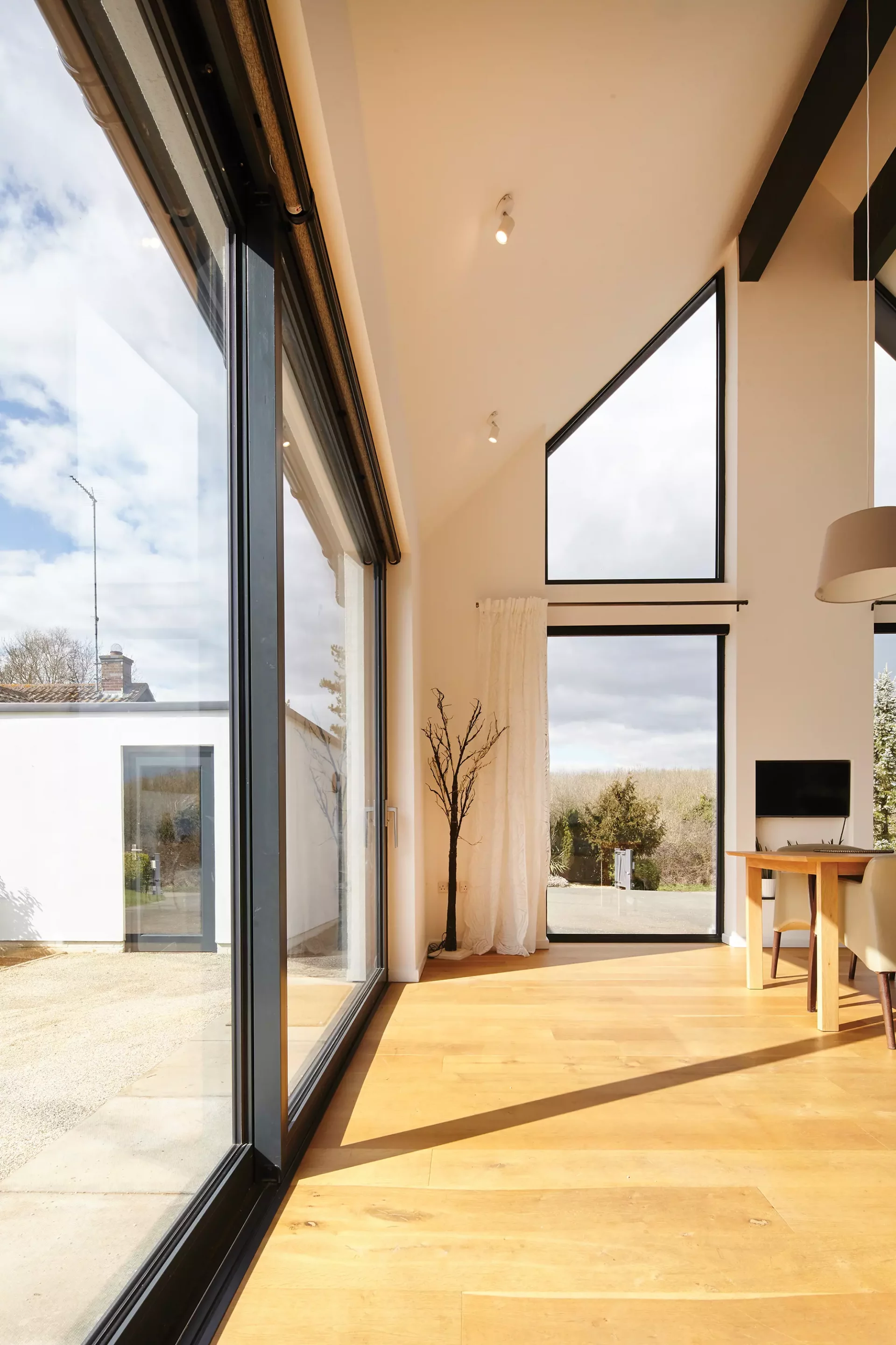
Carefully placed glazing allows light and warmth into this angled extension project
Triple Glazing
Most Build It readers will know that triple glazing refers to sealed units that have three sections of glass. Performance varies, depending on the thickness of the glass, cavities, which gas is used between the gaps (usually argon) and any coatings.
Triple glazing can be much better than double, but it’s not always a given. It will depend on your budget and insulation goals.
The main advantage is that triple glazing will typically outperform double-glazed windows when it comes to U-values (more on those in the box above). So, if minimising heat loss and maximising insulation is high on the agenda, consider triple glazing.
What is U-Value?Thermal transmittance, aka the U-value, is the rate at which heat is transferred through a structure divided by the difference in temperature across it. U-values are measured in Watts per metre squared Kelvin (W/m2K). The lower the U-value, the more insulated a product is. When it comes to doors and windows, glass plays a huge part in a product’s overall thermal performance. But you must take into account the U-value of both the frame and the glass together – not just the glazing itself. So, make sure your supplier is providing the right information. According to the regs for a new build, a glazed door or window must achieve a maximum U-value of 1.6 W/m2K. To meet this, the centre pane of glass will typically range from as low as 0.6 W/m2K up to 1.2 W/m2K. |
Heat Resistant Glazing and Coating
The new Part O of the Building Regs, designed to tackle overheating, places glazing and ventilation at the heart of the new standards. The main intention behind it is to limit excess solar gain in a room and to ensure there are measures in place to quickly remove heat from the indoor environment.
Part of this includes a requirement to limit the area of glass in a room based on a percentage of the floor area. This calculation depends on the orientation of the glass and the level of ventilation. Glass coatings can also help mitigate the risk of overheating.
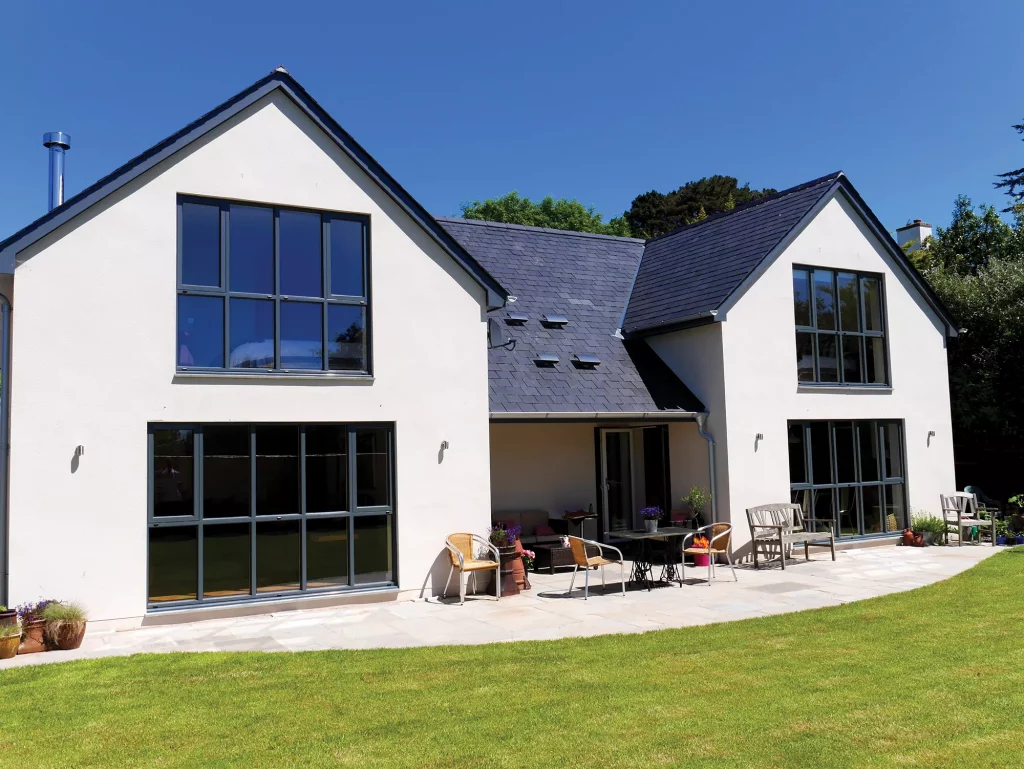
A solar coating on the glazing of this house prevents it from overheating in the warmer summer months
Low-e, or low emissivity, glass has a transparent coating that’s microscopically thin and reflects infrared energy (heat) back into the room. Effectively this stops the transference of heat through the glass. Low-e is essential to meeting Part L of the Building Regulations.
Solar control glass is a hi-tech product developed to allow natural light to pass through, while radiating and reflecting away a large degree of the sun’s heat. So, the indoor space stays much cooler. It’s a good idea to consider this type of glazing if you are planning on large swathes of glass looking out to a southerly aspect.
| Matt Higgs is managing director of Kloeber. He brings 25 years’ industry experience and a wealth of varied expertise, from carpentry to design, engineering, project managing and contract management. For more, visit Kloeber’s website or call 01487 740044. |
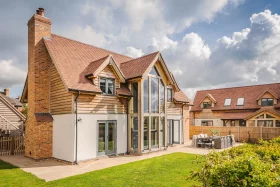
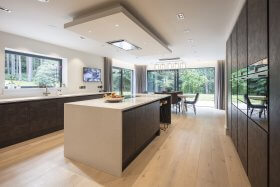






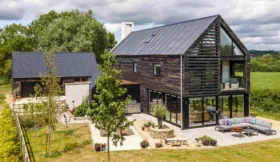













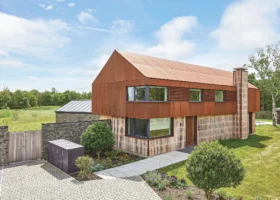
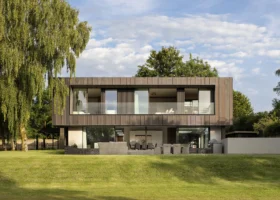






































































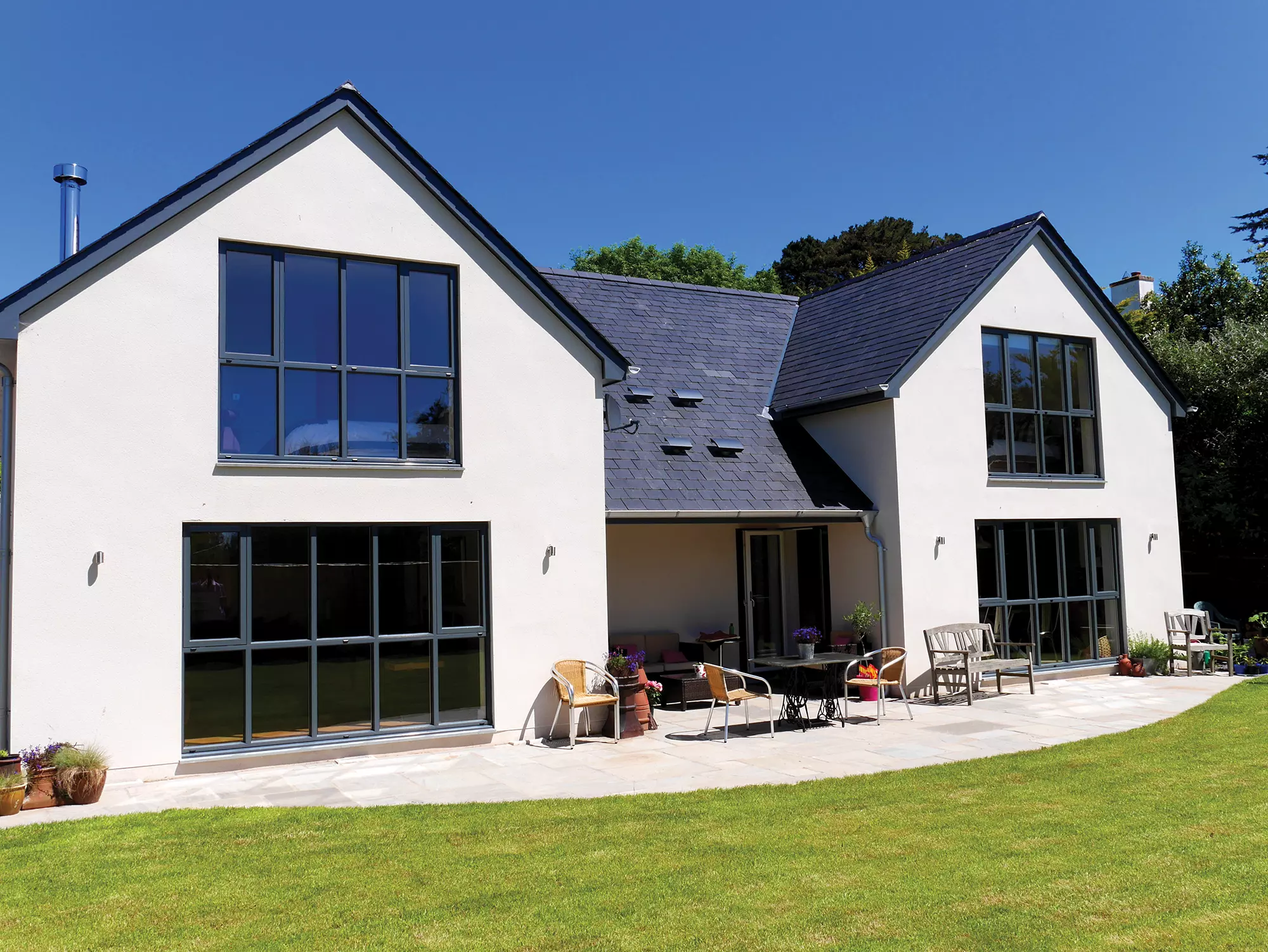
 Login/register to save Article for later
Login/register to save Article for later

